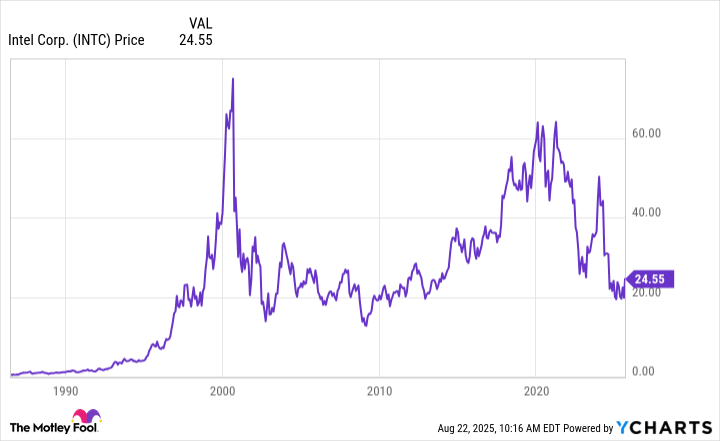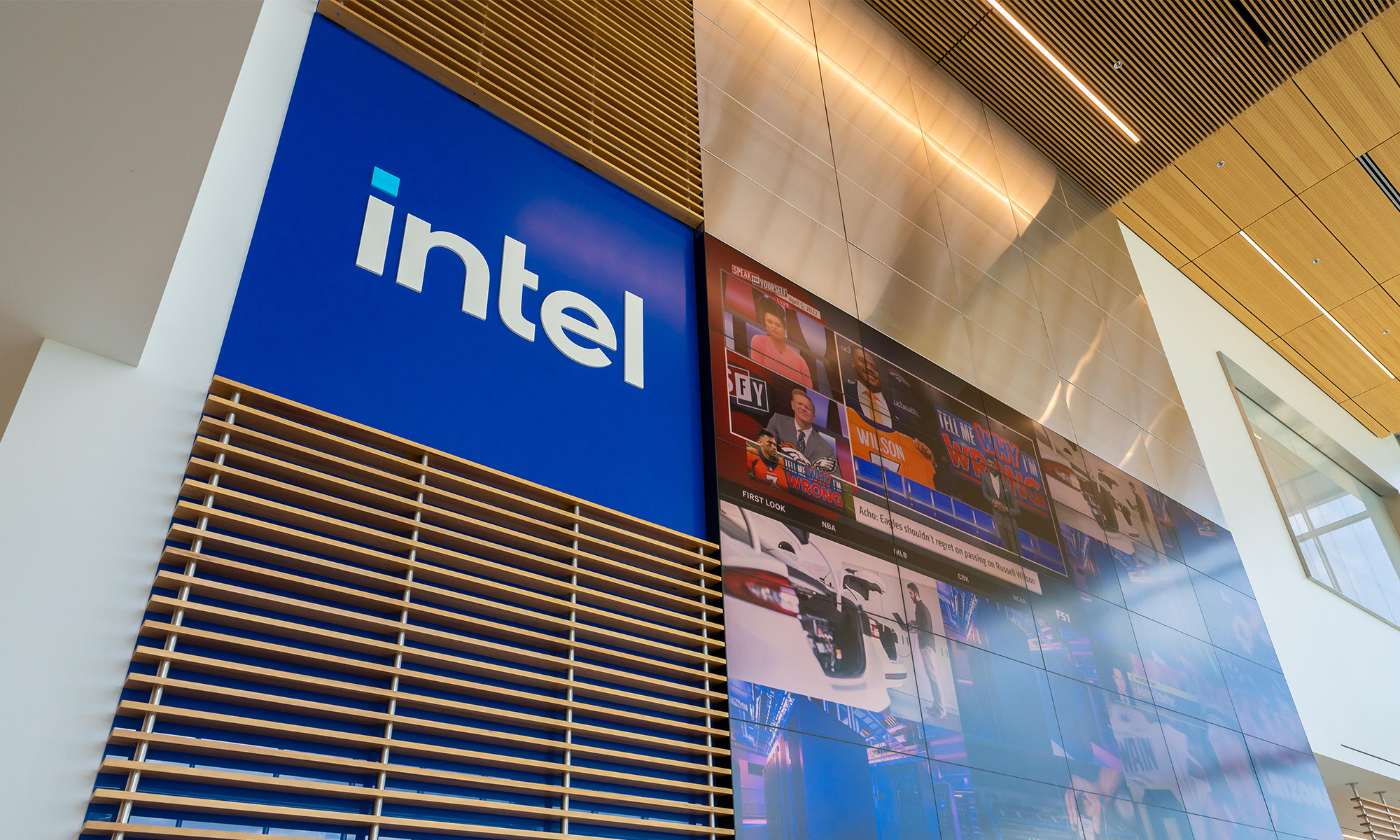In recent years, investors soured on Intel (INTC +1.69%) stock. The one-time leader in the semiconductor industry lost its technical lead in chipmaking years ago, and it invested billions in capital expenditures trying to recapture that edge.
It is in that environment that Softbank has agreed to invest just over $2 billion in the struggling tech giant. Such a cash infusion could help take Intel back to at least a $200 billion market cap. Here's how.

Image source: Intel Corporation.
Intel and Softbank
Softbank has agreed to buy a stake equal to just over 2% of Intel's outstanding shares at a price of $23 per share. This is an interesting development as, according to the Financial Times, Softbank was in talks to buy Intel's foundry division before agreeing to make this investment.
From a certain point of view, a $2 billion cash infusion may not seem meaningful considering that Intel is on track to spend $18 billion in capex in 2025 alone. Moreover, the rival that it wants to challenge in the foundry market, Taiwan Semiconductor, pledged to invest $165 billion in building out its facilities in the U.S. alone over the next several years.
However, some investors may be overlooking some critical benefits of the deal. For one, no company operates more chip foundries in the U.S. than Intel, and former CEO Pat Gelsinger's decision to open up that capacity to third-party chip designers offers one possible avenue for recovery.
Moreover, in terms of what else Softbank owns, its 90% stake in chip-design firm Arm Holdings, which specializes in designing and licensing CPU cores built around its architectures, may be the key to understanding this deal. Such a partnership could give Intel's foundry business the competitive boost it needs.
Interest from the government
The deal with Softbank could be a critical part of Intel's recovery. Despite laying out tens of billions of dollars in capex on its facilities, Intel's foundry business has yet to land a major customer.
Additionally, Intel has drawn increased interest from the U.S. government, particularly after President Donald Trump asserted that CEO Lip-Bu Tan should resign over his alleged ties to China. However, Trump reconsidered after meeting with Tan, instead becoming interested in the federal government taking a stake in Intel's business.
Now, Intel and the U.S. government have finalized that agreement, funded with $5.7 billion granted to Intel under the 2022 CHIPS Act and an additional $3.2 billion awarded to the company under a lesser-known program called Secure Enclave. In sum, the Softbank stake and the interest from the government speak to the rising interest in Intel and a possible path back to a $200 billion market cap for the chipmaker.
Getting to $200 billion
The question for investors is how all of this interest will actually affect Intel stock.
Intel's struggles over the past decades have left it trading at a market cap that it first reached in 1997. Its stock has fallen so far that it trades at a price-to-book ratio of 1.1, a level implying that the company as a going concern is only worth slightly more than its liquidation value.
That decline has taken its market cap to $107 billion, implying that the stock has to approximately double in value to reach $200 billion again. Since Intel was a $200 billion company as recently as the beginning of 2024, one might think it should return there within the next five years, though its current valuations point to some skepticism.

NASDAQ: INTC
Key Data Points
Intel in 2030
Given Intel's history and the current state of the company, it could likely return to $200 billion in the next five years. The bigger question is how it would get there and whether it could sustain those gains.
Intel has long run a troubled business, and it continues to lose ground to its peers. Although it is wise to leverage its foundry footprint to become a third-party manufacturer, and to partner with an Arm investor, its full recovery is far from guaranteed.
Admittedly, the rock-bottom price-to-book ratio lessens the risk for investors who buy shares of Intel now. Nonetheless, until it can demonstrate its ability to leverage its Softbank partnership and government funding into a competitive foundry business, investors should probably limit their exposure to levels they feel are appropriate for speculative positions.






